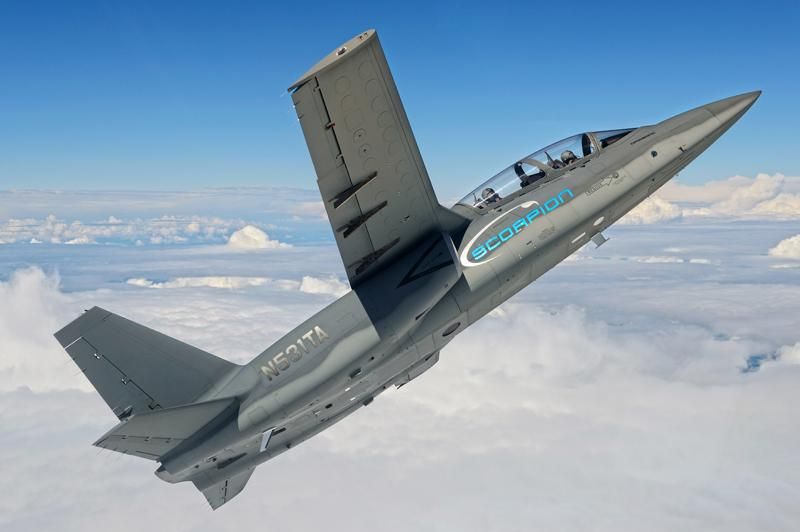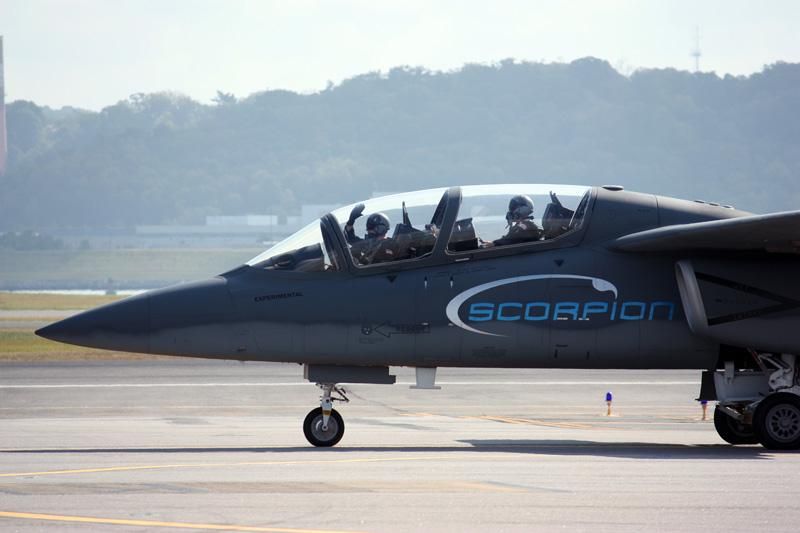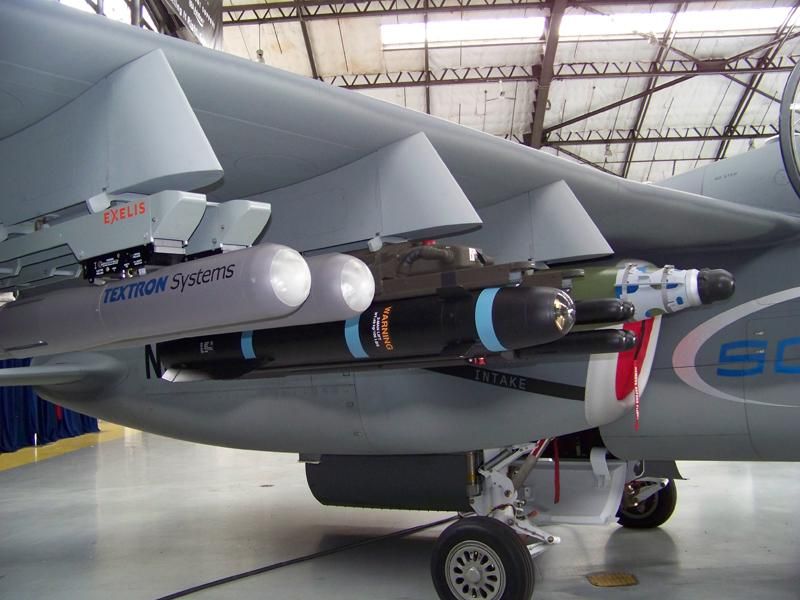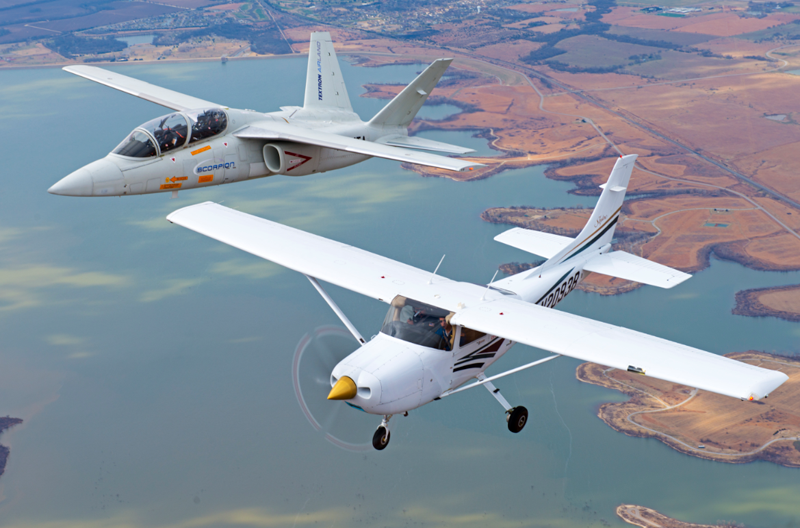How Did This Mean-Looking Jet Get Permission to Land In Washington D.C.?
For one thing, it left its weapons at home.
/https://tf-cmsv2-smithsonianmag-media.s3.amazonaws.com/filer/9c/a4/9ca4dfbe-5b97-4e67-a3b0-ebeab22ddb95/scorpion-dca-monument.jpg)
The Scorpion jet looks like it can sting, and that’s just what its maker, Textron AirLand, intended. “See, Sense, Sting,” declares a slick brochure for the new surveillance and strike aircraft, which made its first flight last December.
The Scorpion recently landed at Washington Reagan National Airport (DCA), where attendees at a nearby Air Force Association conference could see it on display in a closed hangar. On September 12, the day before its landing at DCA, the Metropolitan Washington Airports Authority assured local media that in this case, looks couldn’t kill.
“The military-style fighter jet aircraft does not represent any threat to public safety,” said MWAA in its advisory. “The flights have been approved by the airport and appropriate federal authorities. The aircraft will not have any weaponry attached while in flight.” It’s extremely rare for fighters to land at Washington’s busy civilian airport, which is close to two military airfields—Bolling and Andrews.
With a gray livery and aggressive profile, the Scorpion is a departure from its siblings in the Textron family, which include Beechcraft, Cessna, and Hawker. The jet is being marketed as an intelligence, surveillance, and reconnaissance aircraft (ISR) with strike capability, “capable of being weaponized using a variety of weapon sets including precision guided munitions.”
But this time, the Scorpion left its weapons at home. The Department of Homeland Security worked with the FAA to conduct screenings before the airplane was cleared to fly through civil airspace. Details of the screening are not disclosed, but one obvious requirement was to leave off the weapons that normally are mounted beneath the Scorpion’s wings. Even the munitions attached to the jet while on display at the Air Force Association conference were inert mockups.
The Scorpion also had to hide the ultra-high resolution camera mounted beneath its nose. The camera was tested last month on a closed range near McConnell AFB in Kansas, during Air National Guard exercises meant to simulate civil emergencies such as a train wreck or tornado. In civil airspace, the camera has to remain retracted inside the fuselage until the aircraft is parked inside the hangar.
The Scorpion can be flown with a single pilot, but during its 200 hours of flight testing and its landing in Washington, both seats were occupied. Other than the security screening, the aircraft was treated just like any other general aviation flight coming into DCA. Local media reprinted the MWAA advisory, and a few local TV commentators made alarmist comments about the jet’s appearance. The Wichita Eagle wrote up its landing at “Ron Reagan National” and focused on its potential business impact in Kansas, where the single prototype was built.
Textron calls Scorpion “the world’s most affordable tactical jet aircraft.” With a relatively low purchase price of $20 million and a cost per flight hour of about $2,700, the jet costs less than some business jets in the same corporate family. In fact, says director of corporate communications David Sylvestre, the aircraft has more in common with the Cessna Citation than it does with other military jets.
Here’s a video of the Scorpion’s photo pass and landing at Reagan National, taken from the DCA control tower.





